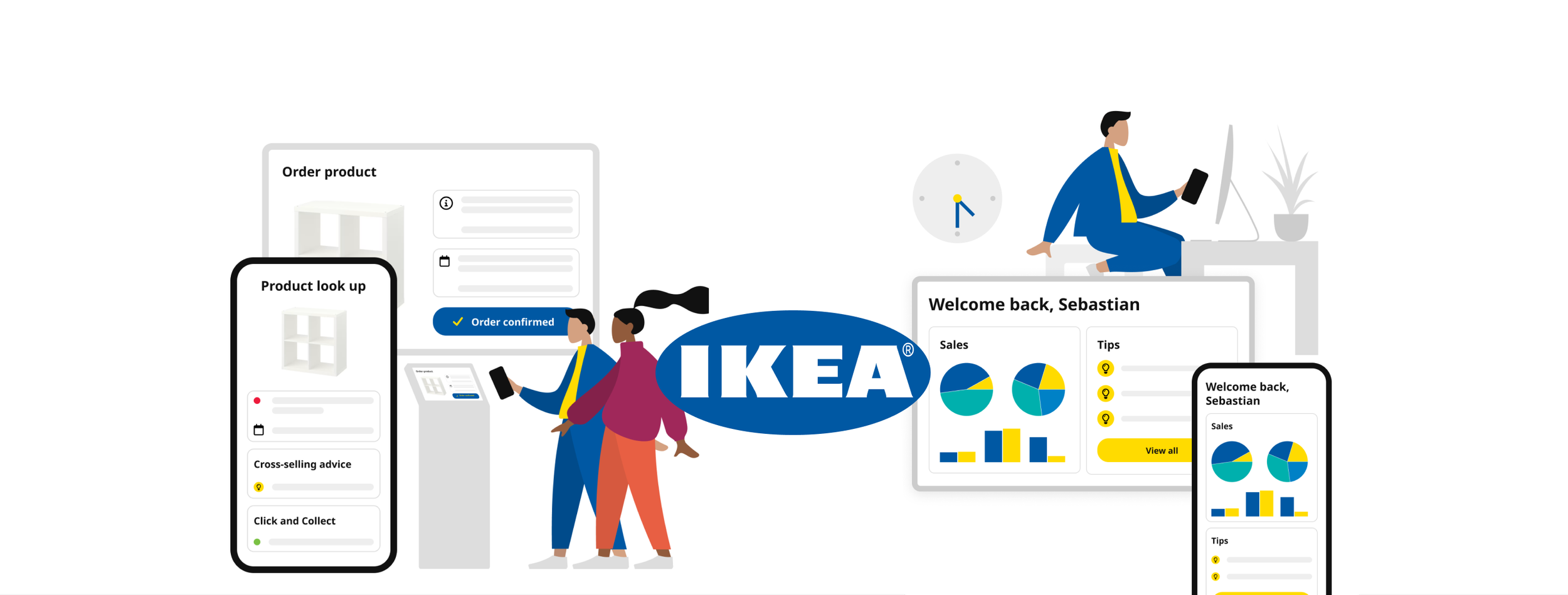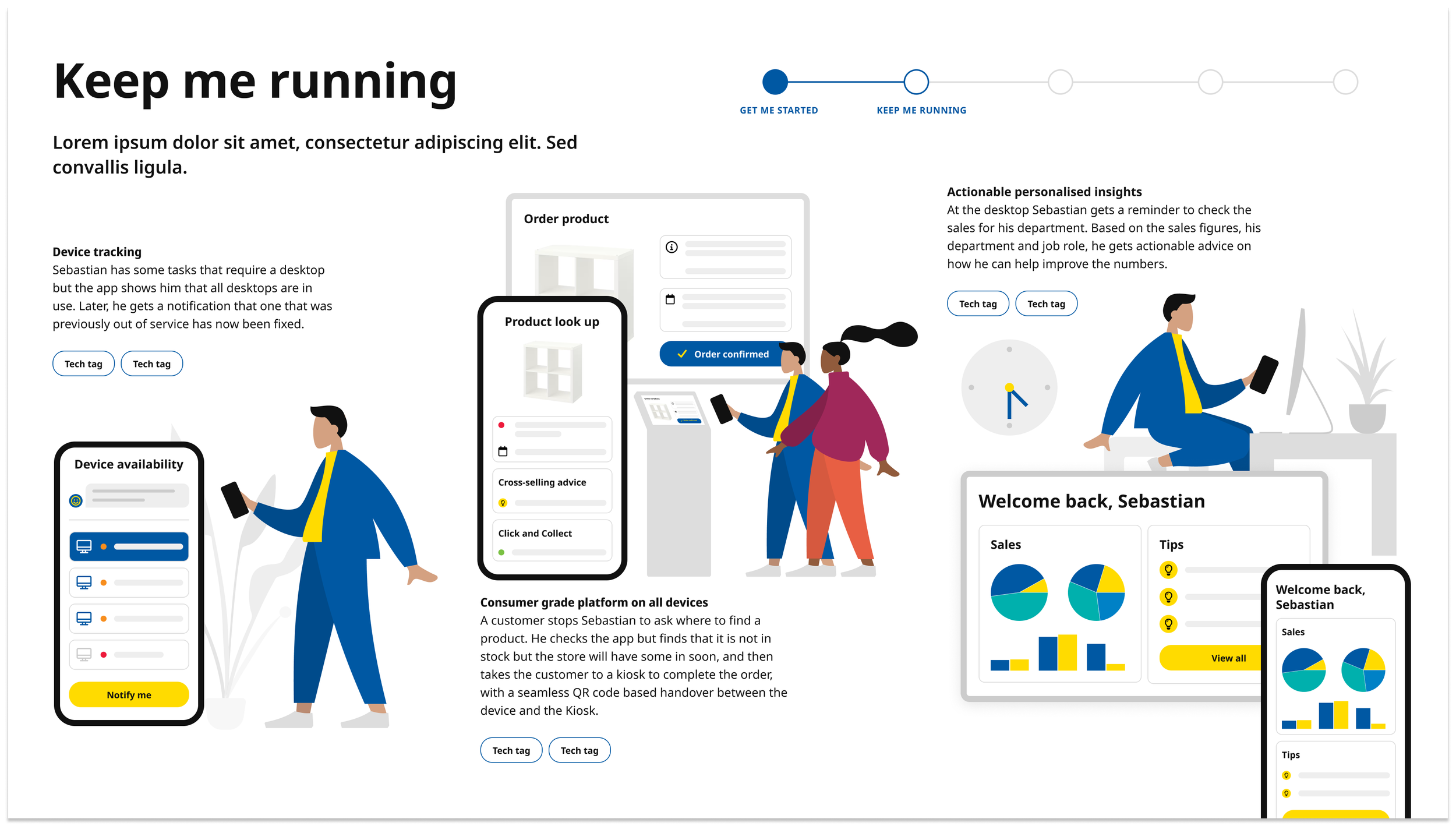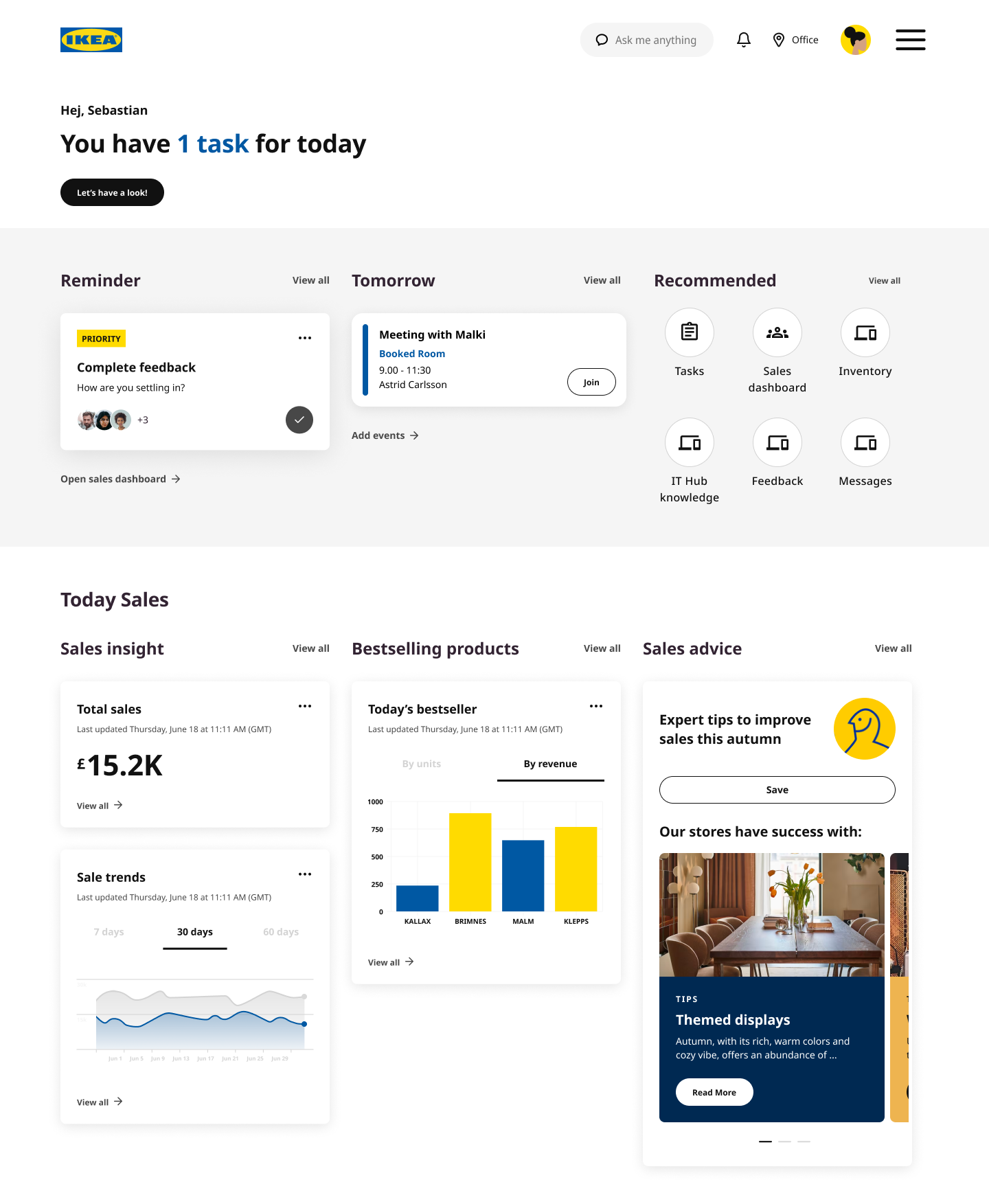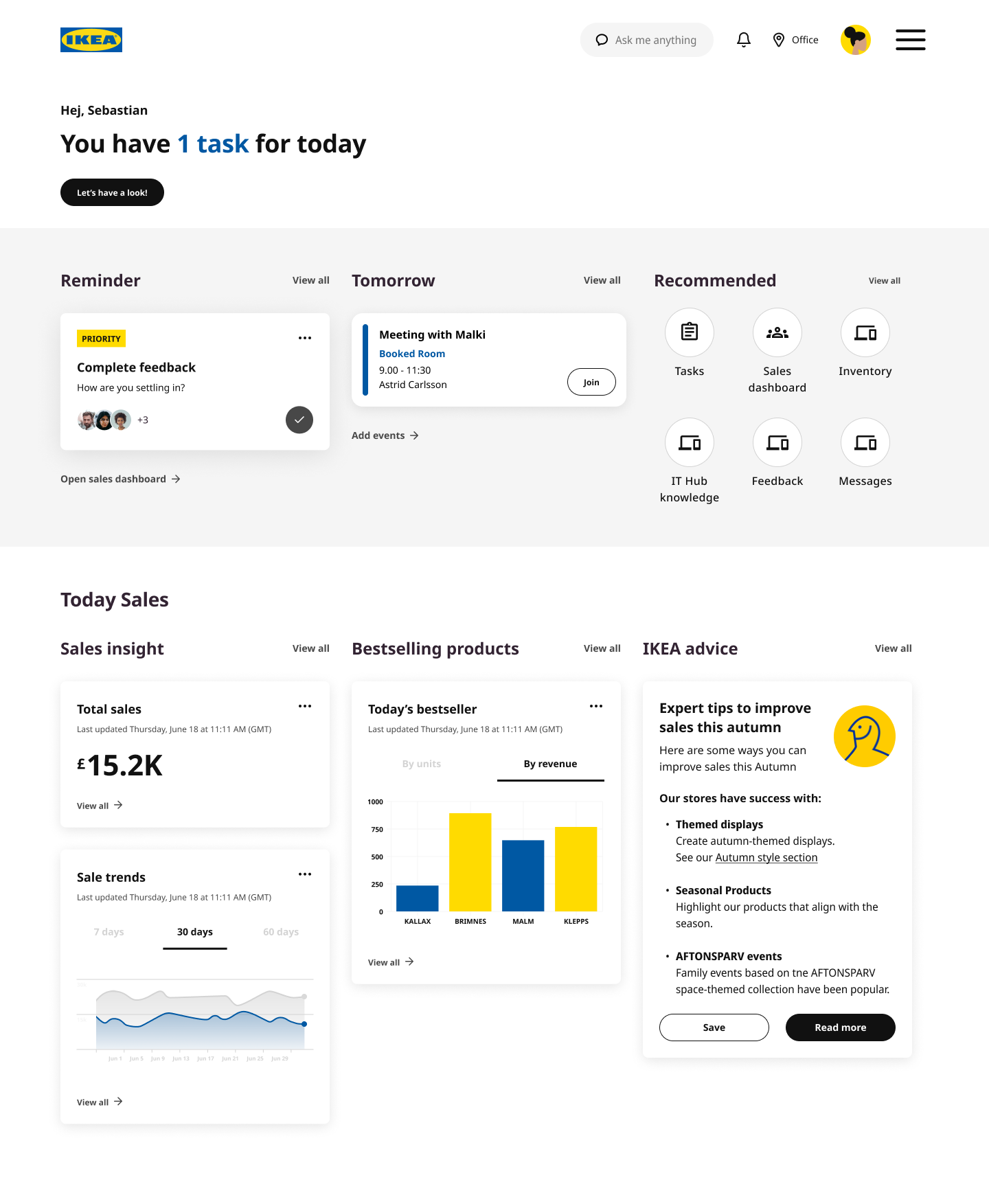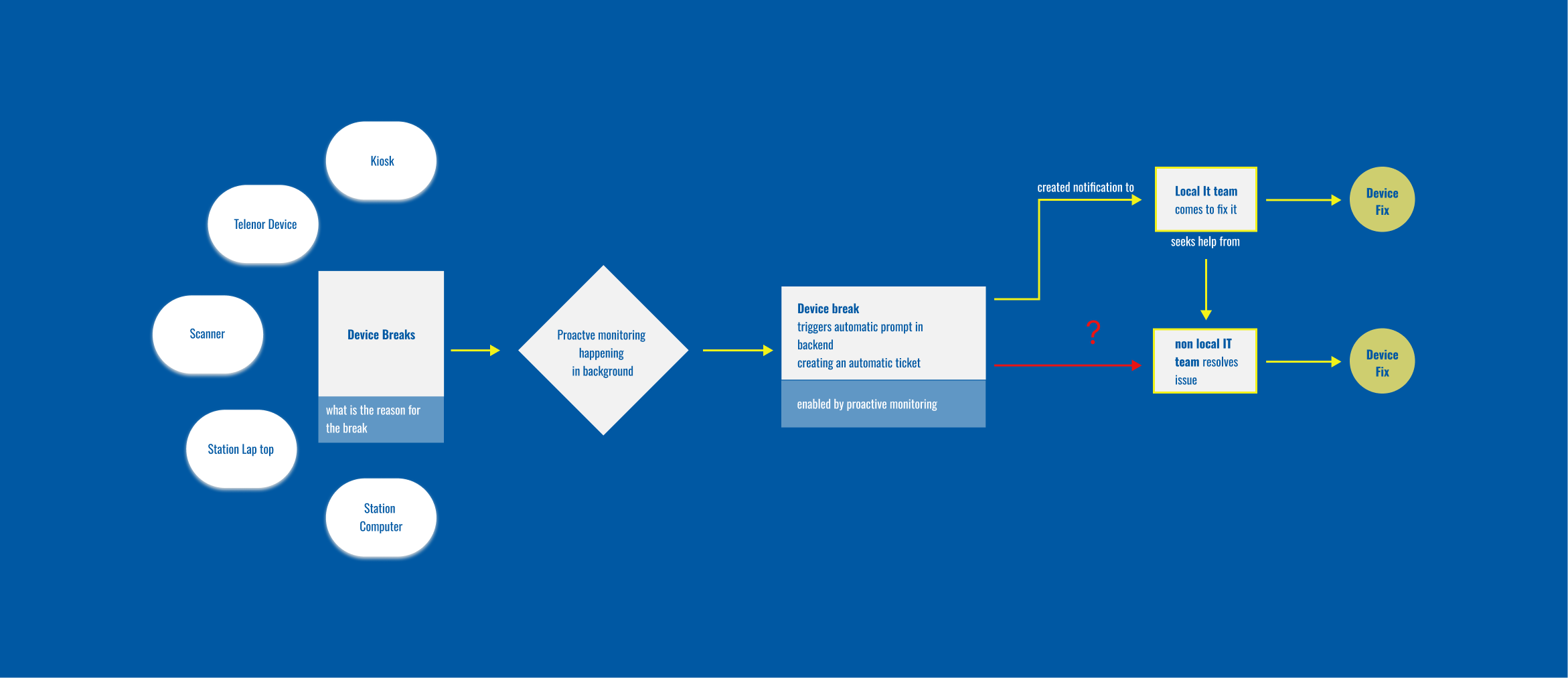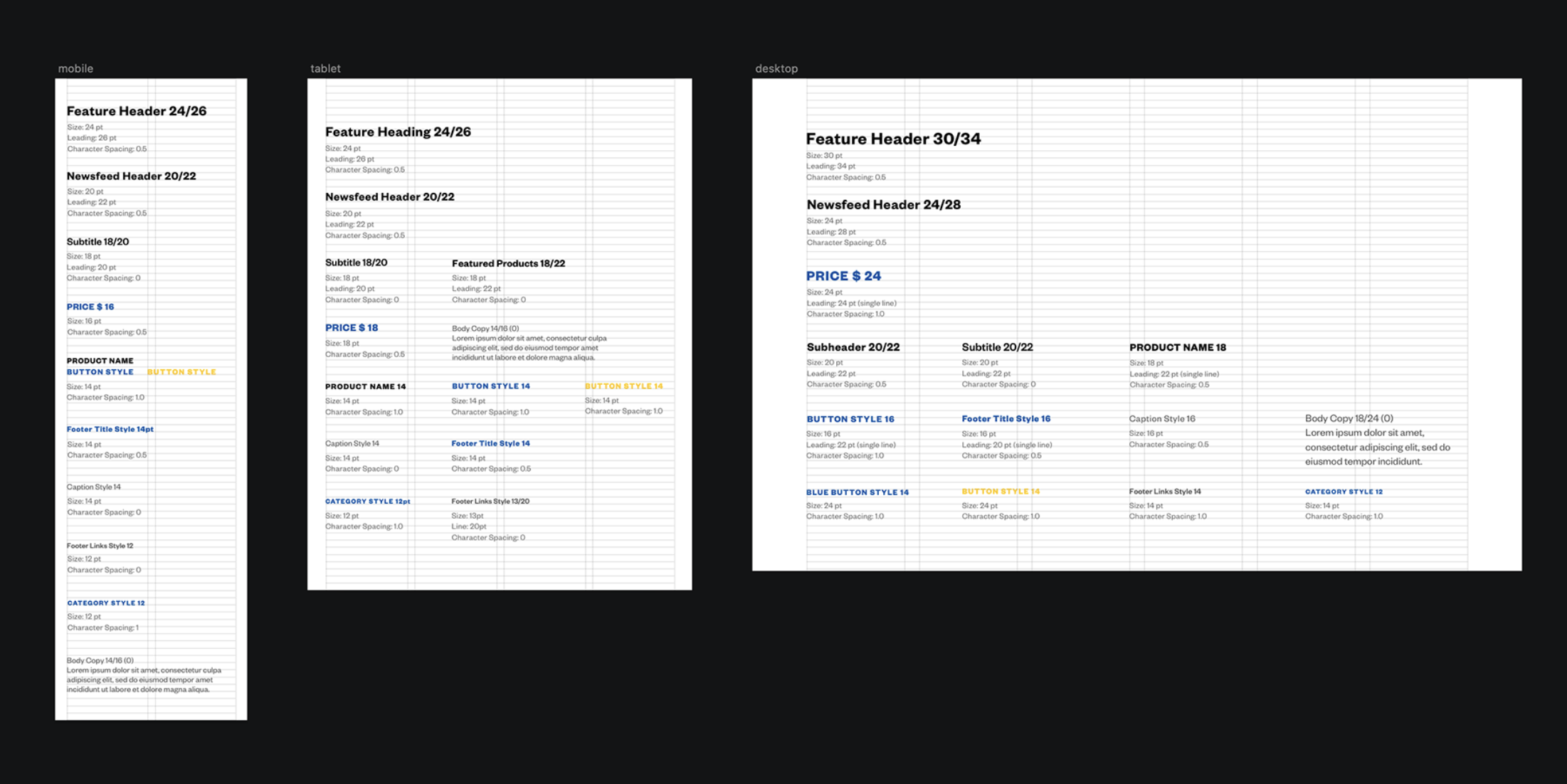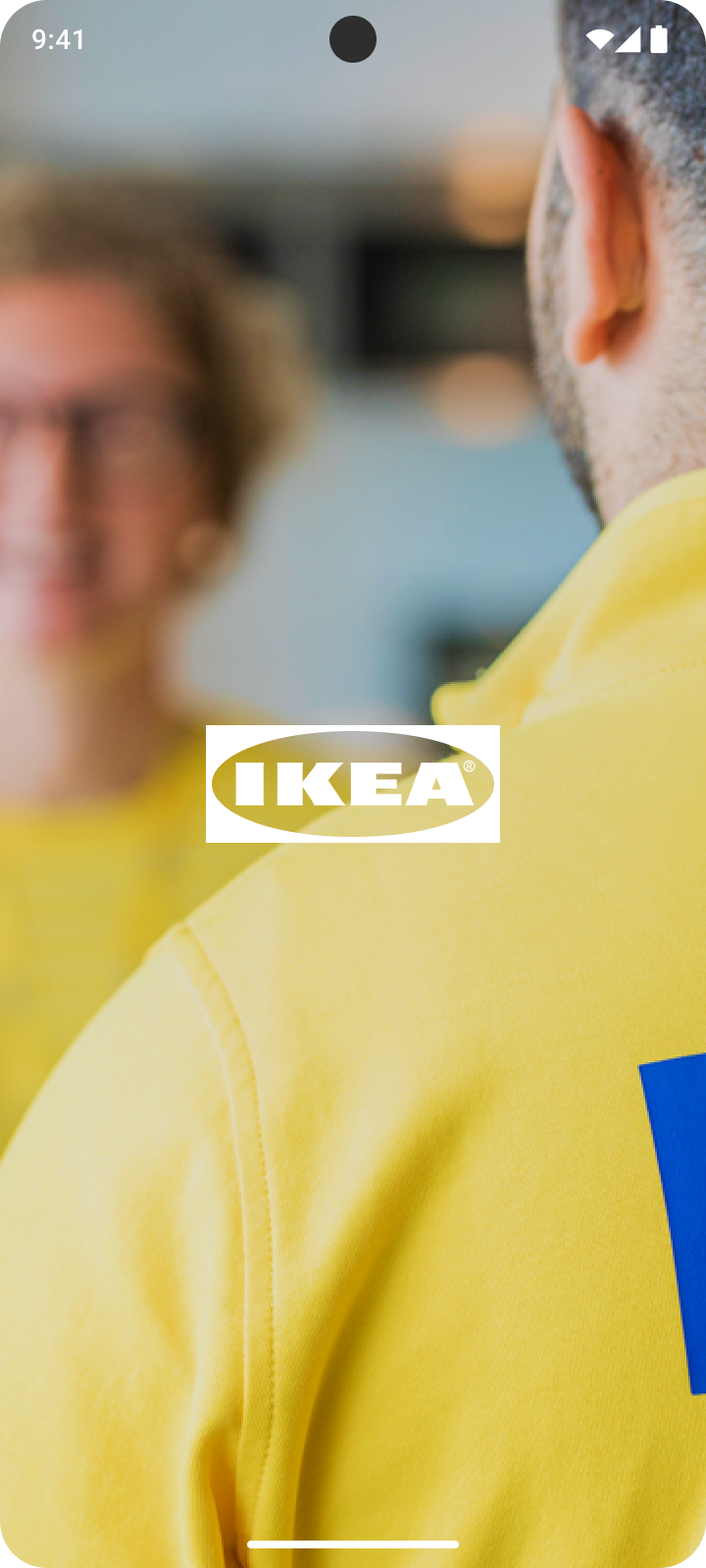employee super app
Introduction
AAt IKEA, the challenge isn’t just digital—it’s deeply human. Co-workers on the shop floor juggle outdated tools, clunky processes, and too many devices just to complete basic tasks. Whether they’re checking stock, helping customers, or simply logging in, friction exists at every step. The current digital landscape makes store work more complicated than it needs to be. Our mission is clear: build something radically better.
This case study explores how the team designs and launches the IKEA employee super app—a unified, consumer-grade digital platform built to support everyday tasks across roles. What begins as a response to tool fatigue quickly evolves into a vision for holistic co-worker empowerment. By simplifying logins, consolidating tools, and anticipating real-time needs, we help IKEA co-workers shift from firefighting to focusing on what they do best: supporting each other and the customer.
With zero-touch onboarding, real-time performance feedback, and intuitive workflows built for mobile, tablet, and desktop, the super app isn’t just a tool—it becomes the foundation of a modern retail workplace. From the warehouse to the shop floor, it is designed to scale with IKEA’s values of simplicity, togetherness, and cost-conscious innovation. Let’s dive into how this transformation takes shape.
Device and Login Fatigue - Shared devices across shifts result in repeated logins and inconsistent user experiences, especially during busy store hours. Co-workers often lose momentum mid-task due to system lockouts or lengthy authentication steps, disrupting both their flow and the customer experience.
Mobile App
In this mobile flow, the co-worker starts their shift by logging into the home screen, where they are greeted with a personalized welcome and an overview of tasks, product insights, and reminders. They can immediately look up a product on the shop floor, either by scanning it or searching manually, which leads to a detailed product card showing stock levels, availability across locations, and suggestions for cross-selling. From this screen, they have the option to place an order on behalf of a customer via a QR code, which seamlessly bridges the experience between the employee’s device and the self-service kiosk, cutting down customer wait times.
The resulting journey map captures one of those key flows—“Keep Me Running”—which illustrates the chain of events that unfold when a customer asks for help but the in-store devices are down. This journey is mapped across multiple swim lanes, tracking not only the employee’s user journey but also front-stage actions, backstage dependencies, and systemic interactions. By visualizing this end-to-end experience, the design team grounds its strategy in real-world constraints, helping define where digital interventions should prioritize speed, autonomy, and cross-device continuity to truly improve day-to-day service delivery.
Ideation
/ Exploration
In the ideation phase, IKEA pushes for fast-paced design and testing cycles directly on the shop floor. Since the super app is set to be deployed across all company devices—web-based desktops and Android portables—we work straight in high fidelity to shorten feedback loops and adapt quickly. A critical component of our approach is designing for onboarding: instead of burdening experienced staff with training duties, new hires get guided by their managers through a shadowing mode within the app itself, allowing seamless immersion into daily workflows. As soon as the onboarding sequence concludes, co-workers transition into live app usage, where real-time feedback fuels continuous iteration.
The system also provides store-wide tips and best practices tailored to the season, helping staff take immediate, informed action to boost sales. This desktop experience proves essential during onboarding, allowing managers and mentors to track when and where new hires are logged in, supporting remote shadowing and live coaching without adding pressure to the team.
Next Steps
The next step for the design team is to move fast toward developing a lean MVP that brings together the core functionalities we’ve tested so far. The priority now is validating the concept in real-world conditions—directly on the shop floor—with active employees and newly onboarded team members. This round of in-context testing helps us refine usability at speed, close remaining experience gaps, and gather actionable insights that feed straight back into our iteration loop.
As the co-worker continues using the app, they receive actionable insights about their performance and department priorities. These insights evolve throughout the day and reflect real-time updates, offering encouragement and data-backed suggestions to help boost sales or service interactions. By the end of the shift, the employee checks a summary screen that shows a wrap-up of completed tasks, personal highlights, and an option to leave feedback, completing a full loop of engagement that supports daily operations and encourages continuous improvement.
Strategy
The strategy behind designing the IKEA employee app begins with a deeply contextual, observational research method known as ethnographic fieldwork. Designers embed themselves on-site, closely observing co-workers during their daily routines, paying attention to the moments of friction, repeated actions, and the breakdowns that occur when technology fails. This direct, in-situ immersion allows the team to identify not just system gaps, but also human behaviors—how employees collaborate with peers, support customers, and navigate across digital and physical touchpoints on the floor.
Web App
In the web-based version of the IKEA Superapp, co-workers log into their account on shared shop floor desktops using either credentials or a quick ID scan, ensuring fast, secure access to their personalized workspace. Once logged in, they are welcomed with a dashboard that mirrors the mobile app, surfacing real-time insights like total sales, top-performing products, and current store performance trends—giving them instant awareness of what’s happening in their department.
Reflection
This app becomes a key enabler for boosting customer satisfaction and driving sales across IKEA stores worldwide. When co-workers feel confident, informed, and equipped to help customers on the spot—especially in large, often overwhelming store environments—it not only improves the shopping experience but directly increases the likelihood of return visits and successful sales.
The Challenges
Fragmented Access to Tools - Co-workers constantly switch between multiple systems just to complete simple tasks like checking stock, managing returns, or finding a product. This fragmented access doesn’t just waste time—it creates cognitive overload and leaves employees feeling disconnected from the tools they rely on every day.
Dependency on Managers - When digital systems are unintuitive or incomplete, co-workers turn to their managers for help—even for routine questions. This constant reliance slows down operations and undermines the autonomy IKEA wants its staff to have on the shop floor.

